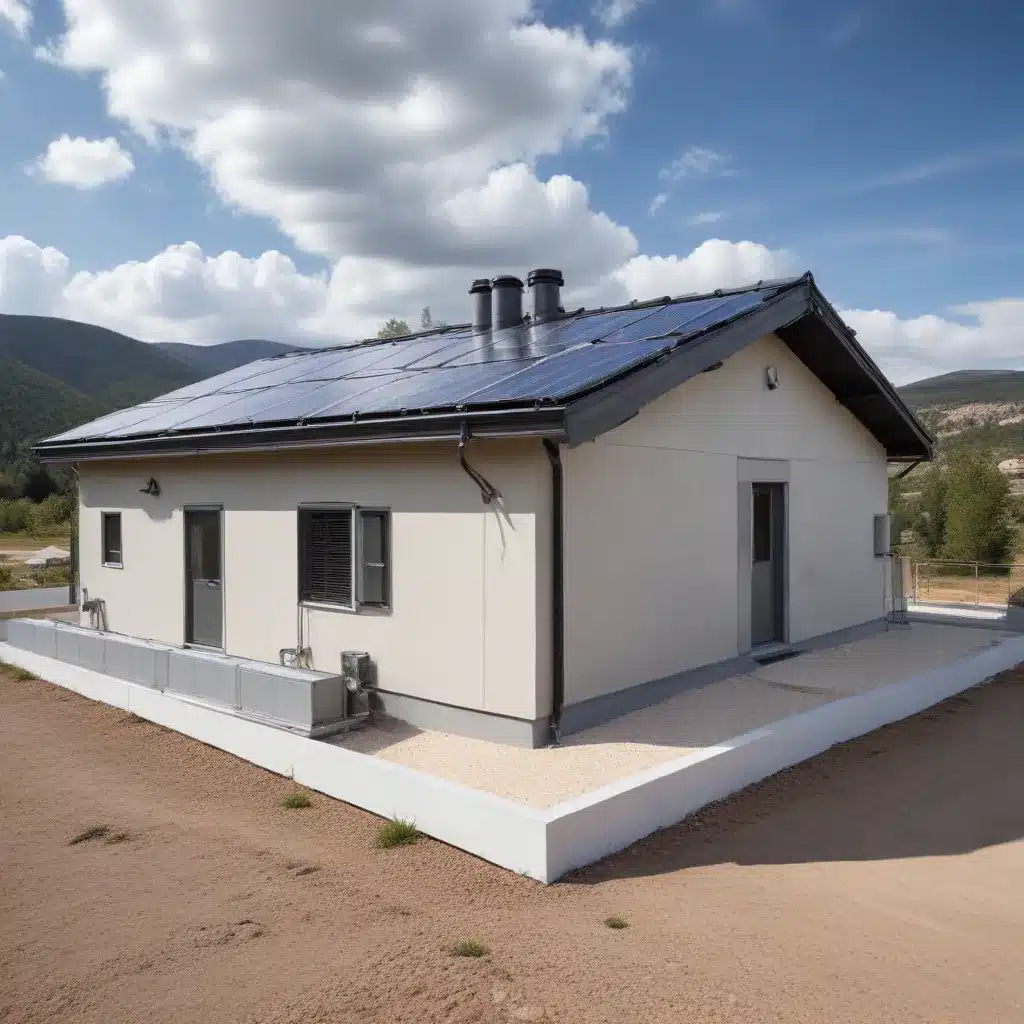
The Evolving Role of Thermal Energy Storage in Sustainable Roofing
Roofing professionals play a crucial role in shaping the energy efficiency and sustainability of modern buildings. As the industry continues to evolve, one of the most exciting advancements is the integration of thermal energy storage (TES) systems into roofing designs. These innovative technologies have the potential to transform how we manage energy consumption and reduce the environmental impact of our built environment.
Understanding Thermal Energy Storage
Thermal energy storage is a process of capturing thermal energy, typically in the form of heat or coolness, and storing it for later use. This stored energy can then be utilized for heating, cooling, or even electricity generation when needed, providing a flexible and efficient approach to energy management.
TES systems come in various forms, including sensible heat storage, latent heat storage, and thermochemical heat storage. Sensible heat storage, the most widely used for commercial buildings, relies on the heat capacity of a medium, such as water or molten salts, to store thermal energy. Latent heat storage, on the other hand, utilizes phase changes, like the melting or solidification of a material, to store and release energy. While more complex and costly, thermochemical heat storage systems hold the promise of higher storage densities, lower heat loss, and longer storage periods.
Integrating TES into Roofing Systems
The integration of TES systems into roofing designs offers a unique opportunity to optimize building energy management. By harnessing the thermal energy from the sun’s radiation or the building’s own heat sources, these roof-integrated systems can:
-
Load Shifting and Demand Response: Thermal energy stored during off-peak hours can be used to meet cooling or heating demands during peak usage periods, reducing the strain on the electricity grid and enabling participation in demand response programs.
-
Improved Energy Efficiency: TES systems can help downsize HVAC equipment, as the stored thermal energy can supplement or replace the need for conventional cooling or heating systems, leading to overall energy savings.
-
Resilience and Backup Power: In the event of a power outage, the stored thermal energy can provide backup heating or cooling to critical areas of the building, ensuring occupant comfort and safety.
-
Renewable Energy Integration: By shifting energy loads to off-peak hours, TES systems can encourage the use of clean and renewable energy sources, such as solar or wind power, further enhancing the building’s sustainability.
Case Studies: Leveraging Roof-Integrated TES
The benefits of roof-integrated TES systems are already being demonstrated in various real-world applications:
NREL’s Energy Systems Integration Facility (ESIF), Golden, CO
The Energy Systems Integration Facility at the National Renewable Energy Laboratory (NREL) features a state-of-the-art high-performance computing data center designed to LEED Platinum standards. The facility’s hot water loops harvest waste heat from the data center, providing heating for the offices and labs. Additionally, the data center’s waste heat is used to heat glycol loops located under the plaza and walkway, melting snow and improving walkway safety. These integrated thermal energy storage solutions have helped the ESIF achieve impressive energy efficiency and cost savings.
TIAA-CREF Building, New York City, NY
The Teachers Insurance and Annuity Association (TIAA) replaced an aging chiller system in its New York City headquarters with a new rooftop, chilled water system for ice production. This system operates during off-peak hours and includes a 30-tank thermal storage system, enabling the building to shift its cooling load and take advantage of lower electricity rates.
Durst Organization Headquarters, New York City, NY
The 41-story Durst Organization headquarters building in New York City utilizes off-peak, nighttime electricity to make and store ice in 28 basement-located storage tanks. Small pumps then move the ice-cooled fluid past fans that blow cold air into the building during daytime operations, effectively shifting the building’s cooling load and reducing energy costs.
Evaluating and Implementing Roof-Integrated TES
When considering the integration of TES systems into your roofing projects, it’s essential to carefully evaluate the building’s specific needs and conditions. Key factors to consider include:
- Utility Costs: Buildings with high utility demand costs, peak-use utility costs, or significant daily load variations are well-suited for TES integration.
- Building Size and Constraints: Phase change TES systems are typically suitable for smaller buildings, while larger facilities may benefit more from temperature change systems.
- Incentives and Rebates: Check with local and state programs, such as the New Jersey Clean Energy Program, for available financing options and incentives to support the implementation of TES systems.
Engaging with experienced roofing professionals and energy consultants can help ensure the successful integration of TES technology into your projects, maximizing the energy-saving and cost-reducing benefits.
The Future of Sustainable Roofing
As the demand for energy-efficient and environmentally responsible buildings continues to grow, the advancements in roof-integrated thermal energy storage systems represent a promising path forward. By harnessing the power of the sun and the building’s own energy flows, these innovative technologies can help roofing professionals play a pivotal role in shaping a more sustainable built environment.
As you explore the integration of TES systems into your roofing projects, be sure to stay informed on the latest developments and best practices. The Roofers in Northampton blog is a valuable resource for staying up-to-date on the evolving roofing industry and discovering new ways to enhance the performance and sustainability of your roofing solutions.

